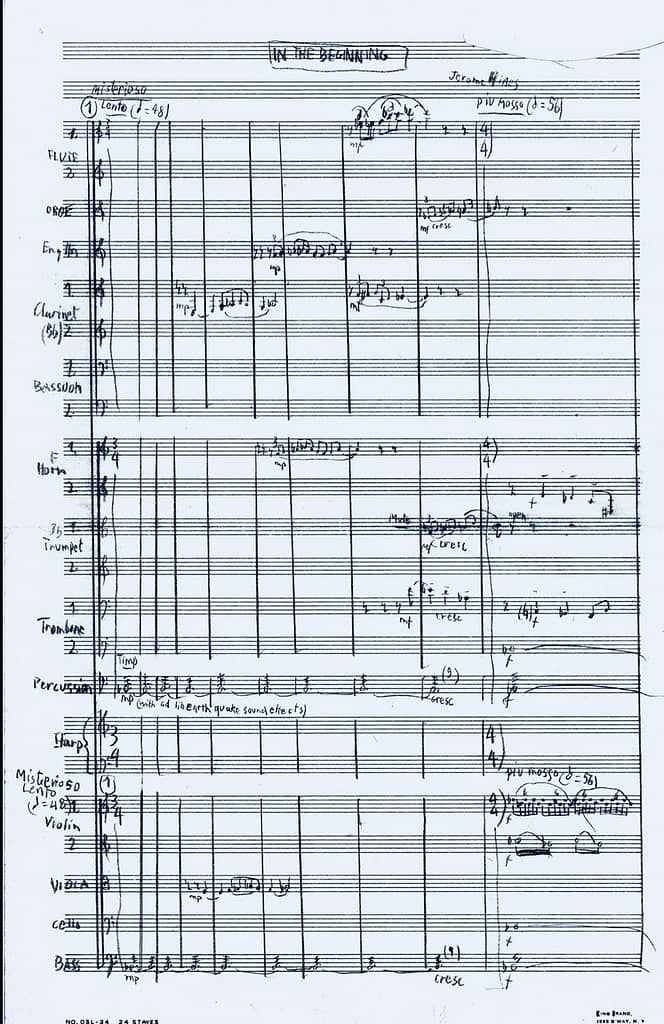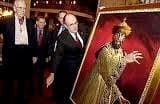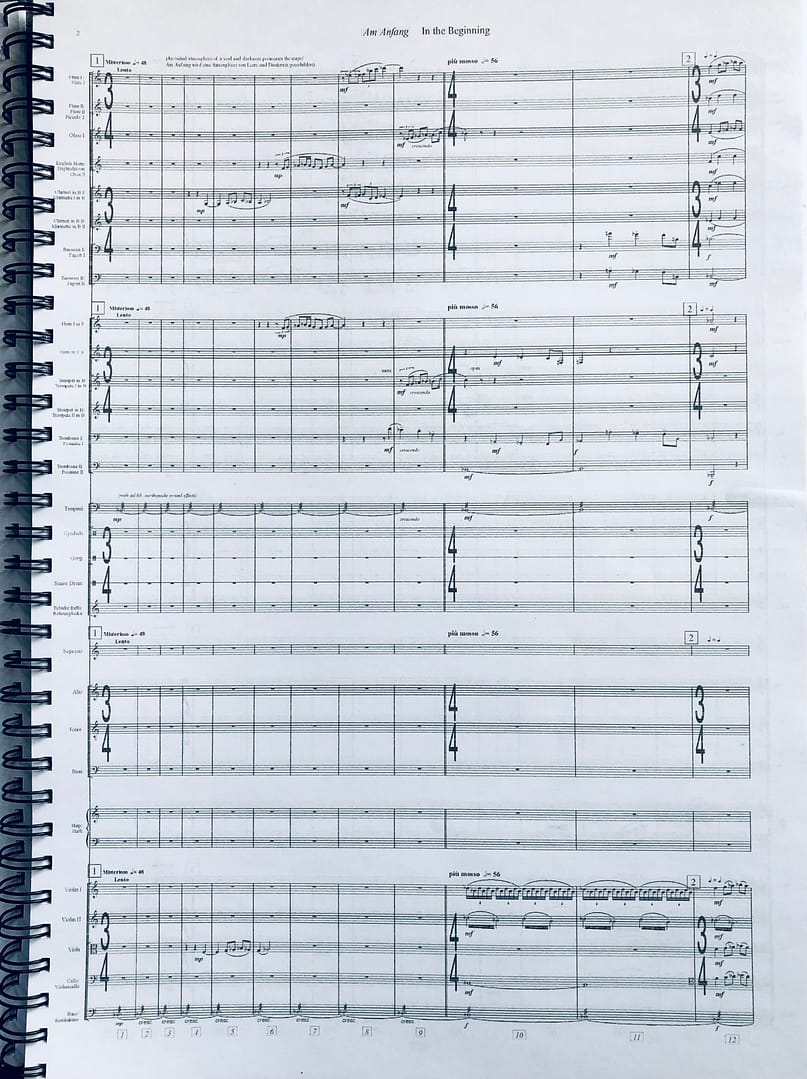
The first page of an unfinished overture hand-written by Jerome Hines.

The COMPLEteD VISION
Kairós Christós is, true to the significance of the individual words in its title drawn from Greek and Latin cultures, a work that came to be in the fullness of its time. The opera focuses on a life that in principle and impact remains “timeless”. Jesus Christ—fully God and fully man. “Kairós” is a term best known from rhetorical discourse of ancient Greece as, “that passing moment when an opening appears which must be driven through with force if success is to be achieved”. No better concept describes how handwritten scores from the sacred drama I Am The Way, originally written by Jerome Hines in a passion play format, came to full fruition as an opera in the process of being dramatically and musically restructured, and digitalized for printing. The publishers decided to incorporate previously unperformed scenes, an unfinished overture and later revisions that reflected Hines’ vision in latter years to restructure his work. Various alterations to text, substitution of story lines to reflect more of the 37 miracles Christ performed, the addition of new characters and bridges of new composition to fill gaps in the drama using the concept of Hines rewritten scenes were included. In order to expand the reach in the international market for opera, a German translation was added. The decision was reached to change the name, as it had become in form and substance a new work – an opera.
THE discovery
In the winter of 2011, three people went into a storage space in Connecticut, where file cabinets, suitcases, briefcases and myriad cardboard boxes or shopping bags had been hastily removed from the house of the Artistic Director of CAI, Derek de Cambra after his death in 2009. Since the premiere of Jerome Hines’ sacred music drama called I Am the Way in 1956, with singular devotion to directing the production and keeping the work performed in all of its various stages of growth since then, de Cambra’s concern until his last breath was that the opera should not be consigned to obscurity. In a social call with Jane Poole, one of two remaining board members, he met an opera singer whose voice he had heard only on an award winning CD produced by soprano Wendy Waller. In a frail state facing an imminent end, he asked her to be involved in a future production that all knew, he would never see.
Five years later, Poole, Waller and -then board member Craig Hart, followed the dark corridors that led to a space filled with the administrative remnants of CAI, valuable oil paintings of Hines and a bust sculptured to capture his intensity as a stage persona. These items were literally saved from the trash heap after a university that accepted the items for an archive called to say the decision was reversed by a new president. Either they could be retrieved or would be thrown away… The three were confronted with a dismal scene of chaos in its unlabeled boxes and various storage containers. All began to wipe off dust and try to figure out what was there.
HIDDEN TREASURE


As various boxes and file drawers were searched, a small valise shifted the focus as its contents, hand-written instrumental parts from scenes of Hines’ opera, were found. As more and more material was discovered in suitcases and boxes, it became apparent, that this might be the only copy of the original score which was used in each performance and had never been engraved. A decision to remove the parchments in order to preserve the many years of careful corrections of original autographs was reached. However, as later inquiry would reveal, the estimate for simple digitization was over $40,000, far beyond the meager sum left in the corporate account. Despite the hope to revive CAI’s programs and solicit new funding, the reality that the absence of the dynamic and famous founder meant a total lack of interest from resources of past support and new organizations who never knew him brought the project to a complete halt…

The first page of the new score – In the Beginning
Kairós Christós
setback leads to triumph
In September 2019, an inquiry came from a large Christian university to perform I Am The Way. Once again, the issue of using the only score, still in handwritten form had to be addressed. A possible solution was offered to allow the music publishing school of the university to take on the digitization project with its students to alleviate the cost barrier of earlier years. It was time to call a board meeting of old members and new faces who agreed to help, and a dear friend of Jerome Hines, William Storch, who had tried to open up possibilities in Austria after de Cambra’s death. Oddly, after unanimous approval, the university suddenly stopped responding to inquiries. Through a Linked-In e-mail to change contacts, it was discovered that the dean who was heading the project had left the university.
A MOMENT OF DECISION – 2019
Undaunted, with idea where the funds would come from, Jane Poole and the opera singer, Wendy Waller decided to stand on the tenets of their faith to fulfill the Board’s resolution to achieve a printed score. Shortly thereafter, the only gift of financial support far less than earlier estimates was donated by one who wishes to remain anonymous. An experienced East German repetiteur Christian Weinreich, offered to help Ms. Waller, and the two, on a volunteer basis, began to work. This “kairós” moment stretched across the pandemic years and beyond with numerous setbacks until a completed score was achieved and registered in 2023. More than 1000 pages in four acts, augmented with a German translation and stage directions – the vision of Jerome Hines has now been realized and is ready for live performance.
Would you consider supporting the premiere and future performances of this new work and permit CAI to resume contributing excellence in classical music with new audiences and a new generation of professional musicians and singers?



